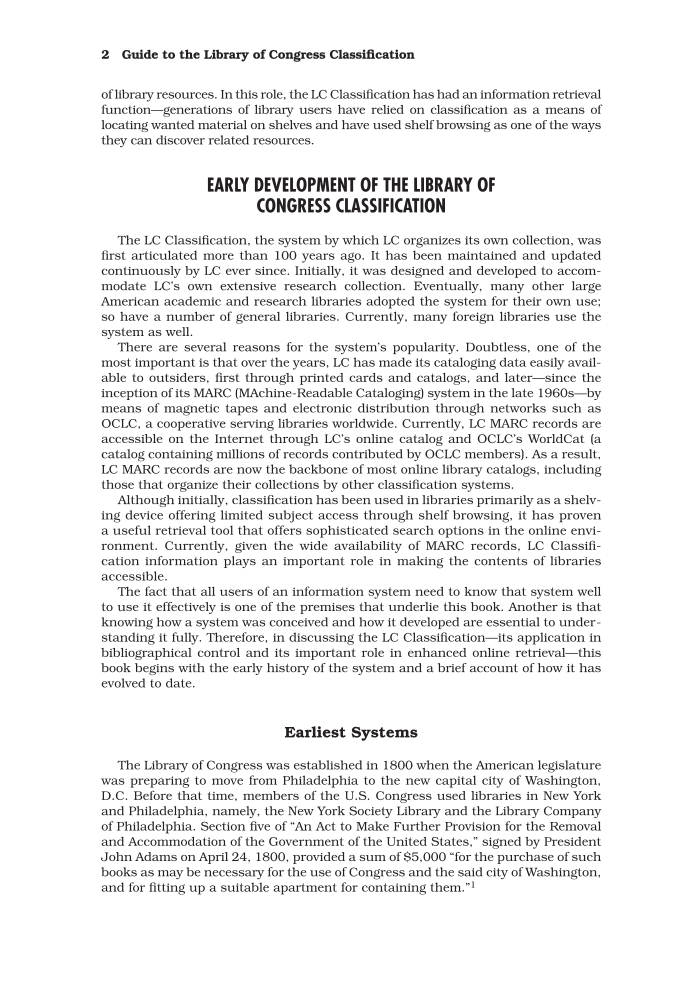2 Guide to the Library of Congress Classification of library resources. In this role, the LC Classification has had an information retrieval function—generations of library users have relied on classification as a means of locating wanted material on shelves and have used shelf browsing as one of the ways they can discover related resources. EARLY DEVELOPMENT OF THE LIBRARY OF CONGRESS CLASSIFICATION The LC Classification, the system by which LC organizes its own collection, was first articulated more than 100 years ago. It has been maintained and updated continuously by LC ever since. Initially, it was designed and developed to accom- modate LC’s own extensive research collection. Eventually, many other large American academic and research libraries adopted the system for their own use so have a number of general libraries. Currently, many foreign libraries use the system as well. There are several reasons for the system’s popularity. Doubtless, one of the most important is that over the years, LC has made its cataloging data easily avail- able to outsiders, first through printed cards and catalogs, and later—since the inception of its MARC (MAchine-Readable Cataloging) system in the late 1960s—by means of magnetic tapes and electronic distribution through networks such as OCLC, a cooperative serving libraries worldwide. Currently, LC MARC records are accessible on the Internet through LC’s online catalog and OCLC’s WorldCat (a catalog containing millions of records contributed by OCLC members). As a result, LC MARC records are now the backbone of most online library catalogs, including those that organize their collections by other classification systems. Although initially, classification has been used in libraries primarily as a shelv- ing device offering limited subject access through shelf browsing, it has proven a useful retrieval tool that offers sophisticated search options in the online envi- ronment. Currently, given the wide availability of MARC records, LC Classifi- cation information plays an important role in making the contents of libraries accessible. The fact that all users of an information system need to know that system well to use it effectively is one of the premises that underlie this book. Another is that knowing how a system was conceived and how it developed are essential to under- standing it fully. Therefore, in discussing the LC Classification—its application in bibliographical control and its important role in enhanced online retrieval—this book begins with the early history of the system and a brief account of how it has evolved to date. Earliest Systems The Library of Congress was established in 1800 when the American legislature was preparing to move from Philadelphia to the new capital city of Washington, D.C. Before that time, members of the U.S. Congress used libraries in New York and Philadelphia, namely, the New York Society Library and the Library Company of Philadelphia. Section five of “An Act to Make Further Provision for the Removal and Accommodation of the Government of the United States,” signed by President John Adams on April 24, 1800, provided a sum of $5,000 “for the purchase of such books as may be necessary for the use of Congress and the said city of Washington, and for fitting up a suitable apartment for containing them.”1
Document Details My Account Print multiple pages
Print
You have printed 0 times in the last 24 hours.
Your print count will reset on at .
You may print 0 more time(s) before then.
You may print a maximum of 0 pages at a time.






































































































































































































































































































































































































